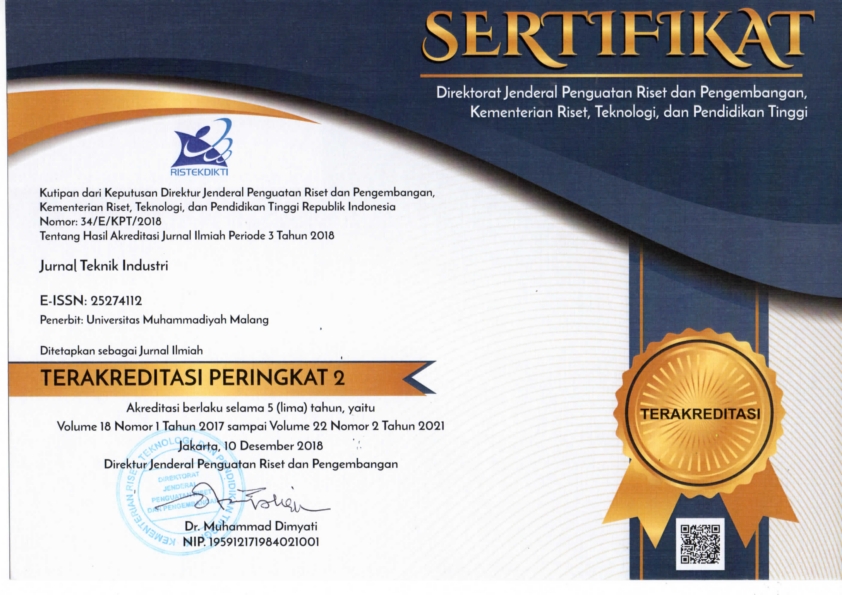Pengaruh Shift Kerja Terhadap Kelelahan Pekerja Pabrik Kelapa Sawit di PT. X Labuhan Batu
DOI:
https://doi.org/10.22219/JTIUMM.Vol12.No2.110-117Keywords:
work shift, fatigue and stressAbstract
Some risks which influence the life of labours should be anticipated by the way of synchronizing among the labours, working processes and environments with ergonomic approaches. The fatigue is a mechanism process of body protection, so that the body will be prevented fromthe fatigue and recoverable after having a rest. The labours which work at night shift have a tendency to get the stress and next will be suffering from fatigue as the clinic phenomena. This research is purposed to formulate the effective strategy of policy for stressing the decrease of the influence of applying the work shift into the risk of fatigue. This is a cross sectional research with its research method is analytic survey. The sample which is used is 30 labours, working in morning and night shifts. The research variables are consist reaction time in the form of fatigue level, blood pressure, heart pulse, physical and mental stress of a people. The instruments or testers used to take data of labour’s reactive time are the Whole Body Reaction is for time, the tension meter is for blood tension, the fingers hand for heart pulse, and the questioner is for physical and mental stress. The data which are obtained for the variable of reactive time, blood pressure, and heart pulse are numerical and analysed by using t test, while the data which are obtained for the variable of physical and mental stress are not numerical and analysed by using chi square test. Based on the result that the total of averages of the reactive time for morning shift labours are 0,97 second, while for the night shift labours are 1.18 second. The total of averages of systole blood pressure for morning shift labours are 119.22 cm Hg, while for the night shift labours are 127.61cm Hg. The total of averages of diastole blood pressure for morning shift labours are 77.44 cm Hg, while for the night shift labours are 82.16 cm Hg. The total of averages of heart pulse for morning shift labours are 73.93, while for the night shift labours are 76.18. Based on the result of the statistical examination that there is a significant influence in to the fatigue (p=0,000), it means that there is a significant relation between working shift and fatigue caused of the stress (p=0,000). Therefore, as the recomendation
of this research and in order to anticipate the decreasing of fatigue, it is important to do the improvement and the evaluation about the rules of work shift in a company, so that the night shift labours can work in the safe condition and take the rest well after working.
Downloads
Download data is not yet available.
Downloads
Published
02/10/2012
How to Cite
Kodrat, K. F. (2012). Pengaruh Shift Kerja Terhadap Kelelahan Pekerja Pabrik Kelapa Sawit di PT. X Labuhan Batu. Jurnal Teknik Industri, 12(2), 110–117. https://doi.org/10.22219/JTIUMM.Vol12.No2.110-117
Issue
Section
Article











